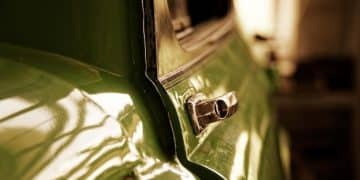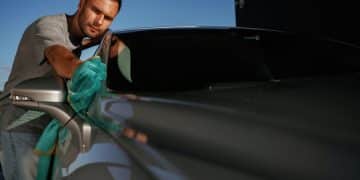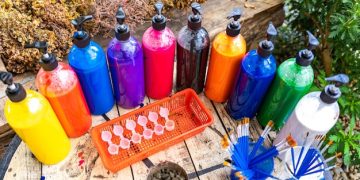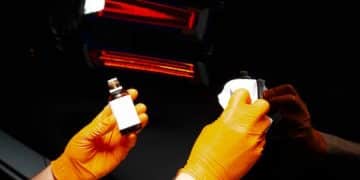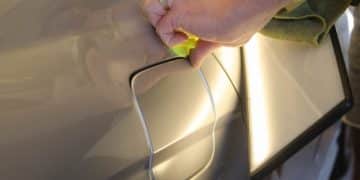Best Car Wax for Your Paint Type: 2025 Guide
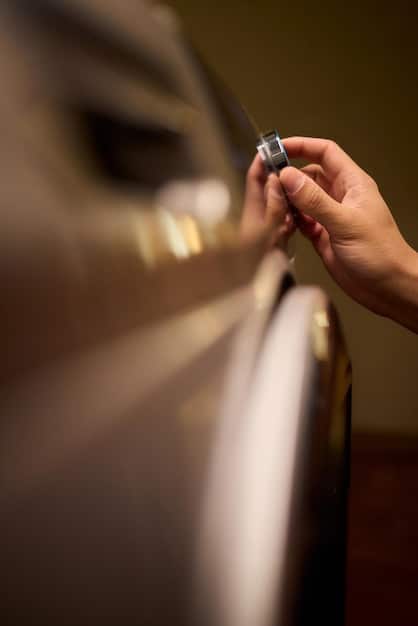
Choosing the correct car wax is paramount for preserving your vehicle’s paint, as different formulations offer unique protection and aesthetic benefits tailored to specific paint types and environmental challenges in 2025.
In the evolving world of automotive care, selecting the ideal car wax for your vehicle’s paint type is more critical than ever. This comprehensive guide, The Ultimate Guide to Choosing the Right Car Wax for Your Vehicle’s Paint Type (Updated for 2025), delves into the nuances of modern paint finishes and advanced wax technologies, ensuring your car not only shines but is also optimally protected against environmental elements.
understanding your vehicle’s paint type
Before you even consider which wax to buy, understanding the composition and characteristics of your vehicle’s paint is fundamental. Modern automotive finishes are complex, a multi-layered system designed for durability and aesthetic appeal. Knowing what you’re working with ensures you select a wax that complements, rather than compromises, your car’s exterior.
Most vehicles today feature a clear coat finish, which is the outermost layer designed to protect the pigmented base coat from UV rays, environmental contaminants, and minor abrasions. However, paint types vary significantly, influencing how different waxes perform and bond with the surface.
The evolution of automotive paint
Automotive paint has come a long way from simple enamels. Today’s paint systems are incredibly sophisticated, incorporating advanced technologies for enhanced durability, gloss, and environmental friendliness. This evolution directly impacts cleaning and protection strategies, making informed wax choices crucial.
- Single-Stage Paint: Older vehicles often have single-stage paint, where color and clear coat are combined. These paints are more susceptible to oxidation and typically benefit from waxes with a higher polishing effect.
- Base Coat/Clear Coat: The most common system today, featuring a colored base coat protected by a transparent clear coat. This combination offers deep gloss and superior protection, and requires waxes that enhance its reflective qualities and provide UV defense.
- Matte/Satin Finishes: A growing trend, these finishes require specialized products that do not add gloss, preserving their unique flat appearance. Conventional waxes are detrimental to matte finishes.
The type of paint finish dictates not only the wax you should use but also the application method and preparatory steps. Ignoring these distinctions can lead to suboptimal results or even damage. Always consult your vehicle’s manual or a detailing professional if unsure about your paint type and its specific requirements.
traditional carnauba waxes: timeless shine and depth
Carnauba wax has long been considered the gold standard in automotive detailing, celebrated for its ability to produce a warm, deep glow that synthetic alternatives often struggle to replicate. Derived from the leaves of the Brazilian palm tree, carnauba is a natural, hard wax that offers excellent protection and a visually rich finish.
Its natural formulation provides a distinctive depth and richness to the paint, making colors pop with remarkable clarity. While synthetic waxes have made impressive strides in durability, many enthusiasts still prefer carnauba for its unparalleled aesthetic qualities, particularly on dark-colored vehicles.
understanding carnauba grades and formulations
Carnauba waxes come in various grades, which directly impact their purity, hardness, and price. The higher the grade, generally, the more refined and visually appealing the finish it yields. However, even lower-grade carnaubas, when properly formulated, can offer impressive results.
- Yellow Carnauba (Grade 1): This is the purest form of carnauba, offering the highest level of gloss and durability among natural waxes. It is typically found in premium wax products.
- White Carnauba: A less refined form, often blended with other ingredients to make it more pliable and easier to apply. It still provides good protection and shine.
- Blends: Many carnauba waxes on the market are blends, combining carnauba with synthetic polymers or other natural oils to enhance ease of application, durability, or improve specific aesthetic properties.
While carnauba offers exceptional shine, its durability generally lags behind modern synthetic sealants and ceramic coatings, typically lasting only a few weeks to a couple of months. For those who enjoy the ritual of waxing and want that unique carnauba look, frequent reapplication is key to maintaining optimal protection and appearance.
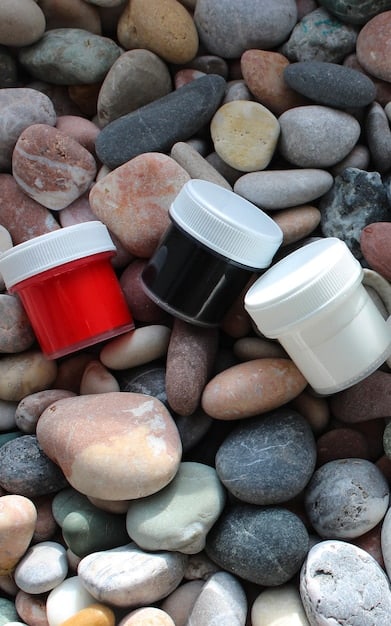
synthetic paint sealants: modern protection and longevity
Synthetic paint sealants represent a significant advancement in automotive protection technology. Unlike natural carnauba, these products are formulated with scientifically engineered polymers that create a strong, durable bond with your vehicle’s paint, offering superior longevity and protection against a broader spectrum of environmental aggressors. They are an excellent choice for drivers seeking long-lasting defence without frequent reapplication.
The chemical composition of synthetic sealants allows them to form a robust barrier over the clear coat, deflecting UV rays, acid rain, road grime, and industrial fallout more effectively than traditional waxes. This advanced protection is particularly beneficial for vehicles exposed to harsh climates or driven frequently, minimizing paint degradation over time.
key benefits of synthetic sealants
Synthetic paint sealants are designed for performance and convenience, making them a popular choice for both detailing enthusiasts and everyday drivers. Their chemical composition allows for a longer-lasting bond and more resilient surface.
- Enhanced Durability: Sealants typically last significantly longer than carnauba waxes, often providing protection for 4-6 months, and sometimes even up to a year, depending on the product and environmental conditions.
- Superior Chemical Resistance: The synthetic polymers in these products offer better resistance to detergents, acid rain, and other harsh chemicals that can strip traditional waxes.
- UV Protection: Most modern sealants incorporate advanced UV inhibitors, crucial for preventing paint fading and oxidation, especially important in sunny regions.
While synthetic sealants often provide a “crisper,” more reflective shine compared to the warm glow of carnauba, technological advancements have led to hybrid products that combine the best of both worlds. These hybrids aim to offer the deep wet look of carnauba with the robust protection and longevity of synthetic polymers, catering to a wider range of preferences.
ceramic coatings (sio2): the pinnacle of paint defence
Ceramic coatings, primarily composed of Silicon Dioxide (SiO2), have revolutionized automotive paint protection, setting a new standard for durability, gloss, and hydrophobic properties. They form a semi-permanent, sacrificial layer over your vehicle’s clear coat, providing significantly more robust and long-lasting protection than traditional waxes or synthetic sealants. This cutting-edge technology is ideal for those who demand the utmost in paint preservation and ease of maintenance, offering an unparalleled shield against the elements.
The molecular structure of ceramic coatings creates an incredibly hard surface that resists micro-scratches, chemical etching, and UV degradation with remarkable effectiveness. This hard shell not only protects the paint but also creates an intensely hydrophobic surface, causing water to bead up and roll off, carrying dirt and contaminants with it. This self-cleaning effect drastically simplifies washing and maintains a cleaner vehicle for longer periods.
benefits and considerations of ceramic coatings
While ceramic coatings offer superior protection, their application process and cost are typically higher than waxes or sealants. However, the long-term benefits often outweigh the initial investment for many vehicle owners.
- Extreme Durability: Ceramic coatings can last anywhere from 2 to 7 years, depending on the coating’s quality, preparation, and maintenance. This dramatically reduces the need for frequent reapplication of protective products.
- Unmatched Hydrophobicity: The intense water-beading and self-cleaning properties keep your car looking cleaner and make washing significantly easier and quicker.
- Enhanced Gloss and Hardness: Ceramic coatings provide an exceptional candy-like gloss and add a measurable layer of hardness to the paint, which helps prevent swirl marks and light scratching.
Given the meticulous preparation required and the precise application techniques, professional installation is often recommended for ceramic coatings. While DIY kits are available, achieving a flawless finish requires a clean, controlled environment and a good understanding of the product. The investment in a ceramic coating is best viewed as a long-term protective measure that not only safeguards your vehicle’s appearance but also retains its resale value by preserving the original paint finish.
specialized waxes for unique paint finishes
Beyond the standard clear coat, modern automotive design offers a variety of specialized paint finishes, each requiring a tailored approach to protection. From vibrant metallics to stealthy mattes, using the wrong product can not only fail to protect but also detrimentally alter the intended aesthetic of these unique surfaces. This section explores specific waxes and sealants designed for these particular paint types, ensuring their beauty and integrity are maintained.
Understanding these distinctions is crucial. For instance, a wax designed to enhance gloss will completely ruin a matte finish. Similarly, a metallic paint benefits from products that maximize flake pop, an effect not universally achieved by all waxes. Selecting the correct specialized product respects the engineering behind these finishes, providing appropriate protection without compromise.
navigating specific paint challenges
Each specialized paint finish presents its own challenges and opportunities for enhancement. The right wax or sealant will preserve its unique characteristics while providing necessary protection.
- Metallic and Pearl Finishes: These paints contain metallic flakes or mica particles that create a shimmering, multi-dimensional effect. Waxes designed for these finishes often contain optical brighteners or polymers that amplify the reflection and depth of the flakes, making the paint “pop.” They emphasize clarity and light refraction.
- Matte and Satin Finishes: These non-glossy surfaces are particularly delicate. Traditional waxes that add shine will ruin their flat appearance, often leaving streaks or shiny spots. Specialized matte-specific sealants or spray coatings create a protective layer without altering the finish’s unique diffused light reflection. These products typically contain no fillers or optical brighteners.
- Chrome and Polished Metals: While not technically paint, these elements often feature prominently. Waxes or sealants specifically formulated for metal can protect against tarnish, corrosion, and water spots, maintaining their brilliant luster. Avoid abrasive polishes unless dealing with significant oxidation.
Always double-check product labels and consult manufacturer recommendations when dealing with specialized paint finishes. The market has responded to these unique needs with a range of innovative solutions, ensuring that every vehicle can receive optimal, type-specific care. Investing in the right specialized product guarantees not only protection but also the preservation of the unique aesthetic that distinguishes these vehicles.
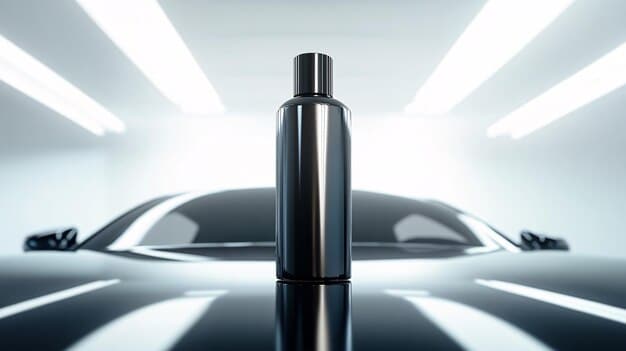
application techniques and preparation for optimal results
Achieving a flawless, long-lasting wax finish isn’t just about choosing the right product; it’s equally about meticulous preparation and proper application techniques. Even the most advanced wax or coating will underperform if applied to an unclean or unprepared surface. This section outlines the essential steps to prepare your vehicle’s paint and apply wax effectively, maximizing its protective qualities and aesthetic appeal, ensuring your efforts yield the best possible results.
Think of paint preparation as laying a pristine foundation before building a beautiful structure. Any dirt, contaminants, or imperfections trapped beneath the wax layer will not only diminish the clarity and shine but can also prevent the wax from bonding properly, reducing its durability. Therefore, a thorough cleaning and decontamination process is non-negotiable for optimal wax performance.
step-by-step waxing for brilliant protection
Following a structured approach to cleaning, decontamination, and application can dramatically improve the final outcome, delivering a deep, lasting shine and superior protection.
- Washing: Begin with a thorough two-bucket wash using a high-quality pH-neutral car shampoo. This removes loose dirt and grime, preventing swirls during subsequent steps.
- Decontamination (Clay Bar): After washing and drying, use a clay bar or clay mitt to remove bonded contaminants like tree sap, industrial fallout, and road tar that washing alone cannot eliminate. This step creates a smooth surface for wax application.
- Paint Correction (Optional but Recommended): For best results, especially on older vehicles, consider polishing the paint to remove swirl marks and minor scratches. This ensures the wax is applied to a perfectly smooth, defect-free surface, maximizing gloss.
- Application: Apply wax sparingly and evenly with a foam applicator pad, working on one panel at a time. Follow the product manufacturer’s instructions for curing time before buffing.
- Buffing: Use a clean, soft microfiber towel to gently buff off the wax residue, revealing a deep, streak-free shine. Turn the towel frequently to a clean side.
Always work in a cool, shaded area to prevent the wax from drying too quickly, which can lead to streaking and difficulty in removal. Additionally, apply thin, even coats; more wax does not equate to more protection, often leading to a sticky, uneven finish. By investing time in proper preparation and application, you not only enhance the visual appeal of your vehicle but also extend the life and effectiveness of your chosen paint protection, making your efforts truly worthwhile.
| Key Point | Brief Description |
|---|---|
| ✨ Carnauba Wax | Natural wax for deep, warm shine; less durable. Ideal for show cars. |
| 🧪 Synthetic Sealants | Polymer-based for superior durability and chemical resistance. Lasts months. |
| 💎 Ceramic Coatings | SiO2 formula for semi-permanent protection, extreme hydrophobicity. Years of defense. |
| 🎨 Specialized Waxes | Formulations for matte, metallic, and other unique finishes, preserving their aesthetic. |
frequently asked questions about car wax
The frequency depends on the wax type and environmental conditions. Carnauba waxes typically last 1-2 months, while synthetic sealants can protect for 4-6 months. Ceramic coatings offer protection for several years. Regular washing and maintenance can extend a product’s life. Monitor water beading to gauge when reapplication is necessary.
While not strictly necessary, applying a carnauba wax or a ceramic-infused spray wax over a ceramic coating can enhance gloss and add an extra layer of hydrophobicity. Ensure the wax is compatible with ceramic coatings to avoid streaking or diminishing the coating’s properties. Look for waxes specifically designed as ceramic boosters.
Car wax is traditionally made from natural carnauba, offering a deep, warm shine but less durability. Paint sealants are synthetic polymer-based products designed for longer-lasting protection and chemical resistance. Both provide a protective barrier, but sealants generally outperform waxes in terms of longevity and resilience. Hybrids now combine their benefits.
No, it is generally not recommended to wax your car in direct sunlight or when the paint is hot. Heat can cause the wax to dry too quickly, making it difficult to buff off evenly and potentially leading to streaking, hazing, or marring the finish. Always work in a cool, shaded area for best results.
Polishing before waxing is highly recommended, especially if your paint has swirl marks, light scratches, or oxidation. Polishing removes imperfections, creating a smooth, reflective surface that allows the wax to bond better and produce a richer, deeper shine. While not strictly mandatory, it significantly enhances the final appearance and durability.
conclusion
The landscape of automotive detailing is dynamic, with continuous innovations in paint technology and protective products. Making an informed decision about the right car wax for your vehicle’s specific paint type is not merely about achieving a temporary shine, but about investing in its long-term protection and aesthetic integrity. Whether you opt for the classic warmth of carnauba, the modern resilience of synthetic sealants, or the cutting-edge defense of ceramic coatings, understanding the nuances of each product and committing to proper application techniques will ensure your vehicle remains a proud reflection of meticulous care. Embrace these insights, and drive with confidence, knowing your vehicle’s paint is shielded by the best protective measures available in 2025.
